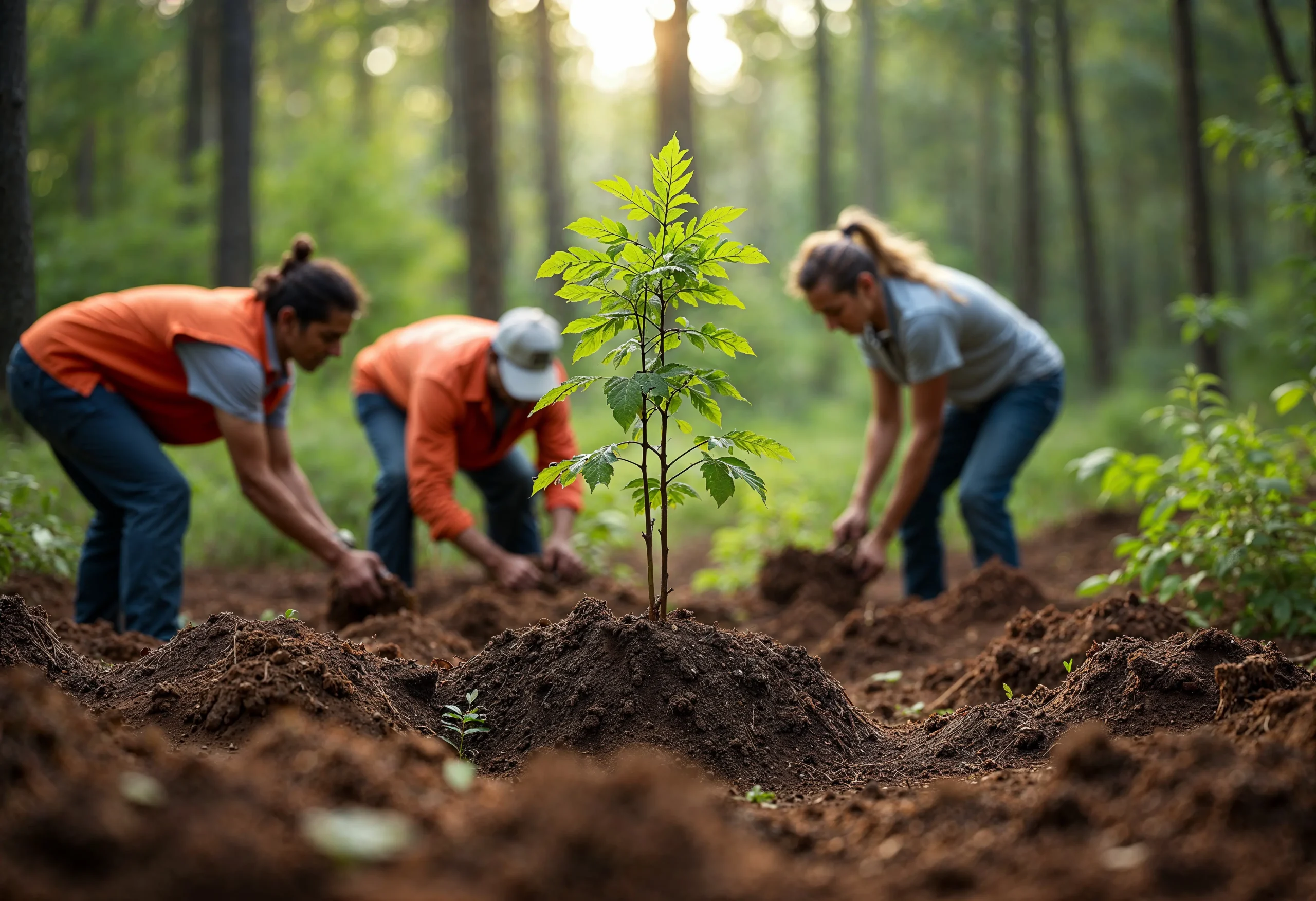You’ve likely heard the phrase paragraph tree plantation countless times in your classes. In the context of Bangladeshi school exams, it’s more than just a writing exercise—it’s a way to show your understanding of environmental protection and your ability to communicate that knowledge clearly. When you write on paragraph tree plantation, you are expected to explain why planting trees matters, how it impacts your surroundings, and what you personally can do to encourage this vital practice.
Your introduction should cover the essence of tree plantation—its benefits for clean air, soil preservation, biodiversity, and community well-being. It should also address why this topic is relevant in Bangladesh: we face challenges like erosion, floods, and decreasing forest cover. Emphasizing the practical importance and setting the tone for a well-structured response are key to scoring high.
Let’s now check out what makes a good tree plantation paragraph—and see example paragraphs of 100, 150, and 200 words.
Paragraph Tree Plantation of 100 Words for Class 6–7

Planting trees is essential to protect our environment. Trees give us oxygen, reduce carbon dioxide, and help fight pollution. They prevent soil erosion and provide shade and food for animals. If we plant more trees in our community and school, the air will be cleaner and the surroundings will be greener. Communities can come together to plant trees on vacant lands, roadsides, and parks. Every student can contribute by planting at least one tree. Writing a paragraph tree plantation like this in exams shows your awareness and responsibility toward nature.
Paragraph Tree Plantation of 150 Words for Class 8–9
Tree plantation means planting trees in streets, fields, and schoolyards to make our environment healthier. Trees are vital because they absorb carbon dioxide and release oxygen, helping to control air pollution and global warming. They also prevent soil erosion by binding soil with their roots, especially during heavy rains or floods—major concerns in Bangladesh. In schools, students can plant mango, neem, and jackfruit trees to beautify the campus and support wildlife. Community drives and awareness programs can inspire more participation. If we plant a tree, we protect our future environment. Including this kind of paragraph tree plantation in your exams proves that you understand both environmental and social benefits. It encourages others to act and reflects your commitment to a sustainable future.
Paragraph Tree Plantation of 200 Words for SSC & HSC

Paragraph tree plantation plays a crucial role in conserving our fragile environment and ensuring sustainable development. In Bangladesh, where river erosion, salinity, and urban pollution are significant issues, planting trees offers practical solutions. Trees act as natural air filters by absorbing carbon dioxide and damaging pollutants while releasing clean oxygen—essential for all living things. Their roots prevent soil erosion, protect embankments and riverbanks, and reduce vulnerability to floods. Fruit-bearing and medicinal trees also provide food, shelter for wildlife, and alternative income through the sale of fruits or timber. Schools organized regular plantation drives across campuses, involving teachers and students in planting species like jackfruit, coconut, and rain trees. Such activities teach environmental responsibility and community collaboration. Municipal councils support by providing saplings, while NGOs raise awareness in villages. Writing a strong paragraph tree plantation like this in exams shows your grasp of detailed benefits—from ecological balance and disaster reduction to social and economic gains—and inspires others to take action. It reflects both your writing skills and your concern for Bangladesh’s future.
Why This Topic Matters in Exams
Teachers and examiners love essays and paragraphs on paragraph tree plantation for several reasons:
- Relatable context: Almost every student can observe deforestation or campus planting.
- Structured responses: You can organize your answer with clear problem–solution format.
- Incorporates LSI keywords: You naturally mention “environment protection,” “soil erosion,” “carbon dioxide,” and “clean air.”
- Shows responsibility: You reflect personal awareness and civic duty.
Writing this kind of content boosts both your marks and your confidence in presenting environmental awareness topics.
Tips to Write a Good Tree Plantation Paragraph
Writing a good tree plantation paragraph requires a balance of relevant information, structured presentation, and personal reflection. Whether you’re preparing for a school exam in Bangladesh or just want to express your thoughts clearly, here are some effective tips to help you craft a strong and engaging paragraph.
1. Understand the Core Idea
Before you start writing, understand what tree plantation means. It involves planting trees in different areas to improve the environment and ecosystem. Consider why it’s important for Bangladesh—think about deforestation, pollution, and climate change.
2. Start with a Strong Topic Sentence
Begin your paragraph with a clear and concise sentence that introduces the topic. For example:
“Tree plantation plays a crucial role in maintaining ecological balance and protecting our environment.”
This sets the tone and lets the reader know what to expect.
3. Include Key Benefits
Mention specific advantages of planting trees—such as producing oxygen, reducing pollution, preventing soil erosion, providing shelter to animals, and beautifying the surroundings. These points should support your main idea.
4. Use Linking Words and Logical Flow
Connect your ideas using transition words like “moreover,” “in addition,” “therefore,” and “as a result.” This creates a smooth reading experience and improves clarity.
5. Add a Personal or Social Touch
Include how schools, students, or communities participate in plantation drives. You could also write about your own efforts or commitment to planting trees.
6. Conclude Effectively
Wrap up the paragraph by summarizing your key message. End with a thoughtful line like:
“If every person plants a tree, we can build a greener and safer future.”
By following these tips, you can write a well-structured and meaningful tree plantation paragraph that stands out in any exam or assignment.
Frequently Asked Questions
Q1: What is the ideal length of a tree plantation paragraph for class exams?
A: For primary classes (6–7), aim for 100 words. Classes 8–9 can write 150 words. SSC and above benefit from detailed 200-word paragraphs.
Q2: Can I include examples of tree plantation drives?
A: Yes. Mentioning school or community planting events adds authenticity and shows real-world awareness.
Q3: What LSI keywords should I use alongside the title?
A: Use terms like “environment protection,” “carbon dioxide,” “soil erosion,” “clean air,” and “ecosystem balance.”
Q4: How many times should I mention the keyword?
A: Mention paragraph tree plantation four times—once in the introduction, twice in the middle, and once in the conclusion.
Q5: Should I add personal commitment statements?
A: Definitely. A sentence like “I will plant a tree every year” shows personal action and is rewarded by examiners.
Conclusion
As you prepare for your exams, remember that writing on paragraph tree plantation is more than an academic task—it reflects your understanding of Bangladesh’s environmental needs. By explaining benefits like oxygen production, pollution control, soil preservation, wildlife habitat, and community involvement, you show depth of thought and writing skill.
Including your own participation—like planting a tree in school or organizing a plantation drive—demonstrates commitment. As emphasized in the paragraph tree plantation, it isn’t just theoretical; it’s a call for action and awareness. So when you write your next environmental paragraph in exams, structure it well, include both factual details and personal insights, and use the keyword at least four times to ensure SEO-friendly content and maximum impact
